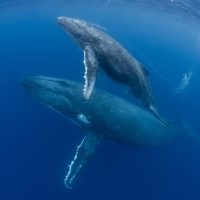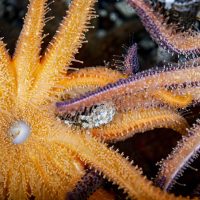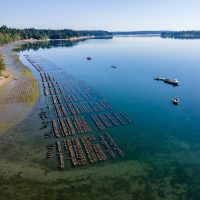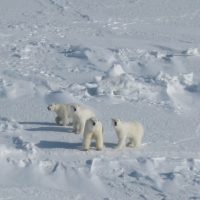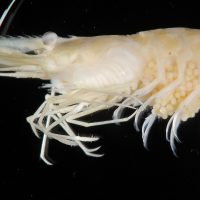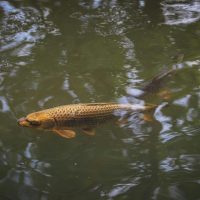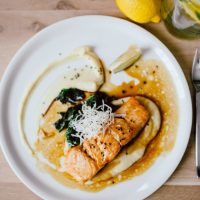Filter Results
Longer body size means more female calves for baleen whale moms
Long baleen whale mothers are more likely to have female calves than males, according to a new study led by the University of Washington. The findings, published by UW QERM student Zoe Rand and Professors Trevor Branch and Sarah Converse, contradict a popular evolutionary theory postulating that strong mammals benefit more from birthing males.
Read moreInspired by her mother and the mountains: Aashna Sharma writes for Science
Fullbright Scholar, Science contributor, freshwater biologist. These are some of the ways to describe Aashna Sharma, who is currently working with Dr. Julian Olden at SAFS as part of her two-year postdoctoral fellowship. From the foothills of the Himalayas in India, Aashna was recently inspired by the Past as Prologue feature in Science that highlights how different scientists from around the world are shaped by their family and background, and submitted a piece herself.
Read moreDiscovery of the decade reveals the culprit behind sea star wasting disease
Until now, no one knew what caused the sea star wasting disease which wiped out populations along the West Coast starting in 2013. But an international research effort including scientists from the University of Washington has finally revealed the cause: a strain of the bacterium Vibrio pectenicida.
Read moreIn a shifting ocean environment, what are the impacts on Pacific oysters?
Seeking to understand the impacts of environmental stressors on Pacific oysters is the driving force behind a years-long research project involving scientists from the University of Washington and NOAA, and in collaboration with the oyster industry. Critical in aquaculture, Pacific oysters are the dominant oyster species grown on the US West Coast, with the industry in the Pacific Northwest alone valued at over $270 million a year.
Read moreA sweet surprise: Polar bear glucose reveals new insights into their reproduction and conservation
Each year, polar bears cycle through periods of intense feasting and prolonged fasting. For reproductive females, seasonal bulking is crucial – it fuels the winter denning and fasting period when they give birth. And when they emerge in spring, it gives biologists a chance to assess populations. A new study led by Sarah Teman explores whether A1c could reveal if a polar bear had recently denned, which – combined with the absence of cubs – may signal reproductive failure.
Read moreChanging waters, changing views: Stakeholder perspectives on ocean acidification and adaptations in shellfish aquaculture
Shellfish aquaculture is a vital industry in the US, but one which faces mounting challenges threatening both productivity and business viability. Research often fails to align with growers’ immediate needs, so to close this gap, a team led by Connor Lewis-Smith set out to document how industry participants perceive ocean acidification threats and evaluate emerging adaptation strategies that are actively being researched.
Read moreNew molecular tools for reef conservation and climate resilience
New research led by UW Medicine, and involving Jacqueline Padilla-Gamiño from SAFS, has revealed that certain protein particles distinguish resilient corals from those that succumb to bleaching, offering new molecular tools for reef conservation and climate resilience.
Read moreTracking two invasions for the cost of one
While conducting early detection monitoring for invasive European green crab (Carcinus maenas), Washington Sea Grant Crab Team discovered a non-native shrimp Palaemon macrodactylus, hitherto unreported along Washington’s portion of the Salish Sea. By examining prior data, and tracking this species closely over subsequent years, the team which included researchers from SAFS, were able to consistently monitor the spread and increase of this species across the region.
Read moreNew study shows non-native species drive the global loss of freshwater fish beta-diversity
In a new paper co-authored with researchers from the Federal University of Paraná, Julian Olden explored changes in biogeographic patterns in global fish diversity caused by the spread of non-native species, teasing apart the geographic and taxonomic drivers of change.
Read moreWithout a trace: How is Russian seafood ending up on US plates?
Whether it is food or clothing, people care about where their products come from. Seafood is no different. Governments, retailers, and customers care about the source of the seafood on their plate as it is an important factor for evaluating the product’s sustainability and whether it aligns with their values. In a new perspective piece published in npj Ocean Sustainability, Jessica Gephart worked with a team of researchers to look into a specific case of seafood traceability in relation to US imports after sanctions on Russia.
Read more